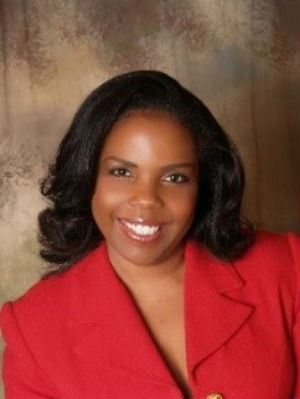'Do Something!' We Need an Emmett Till Moment
“Do something” was the plea from Dr. Jason Smith whose medical team treated eight injured in the first of two mass shootings in Louisville, Kentucky in one week. The surgeon’s remarks about an April 10 incident which also left five dead were directed at policy makers on the local, state and national levels.
 Valda Crowder, MDIn a news conference with the acting Louisville chief of police, Dr. Smith commented that they “barely had to adjust their operating table schedule.” There has been so much violence – at least 42 homicides.
Valda Crowder, MDIn a news conference with the acting Louisville chief of police, Dr. Smith commented that they “barely had to adjust their operating table schedule.” There has been so much violence – at least 42 homicides.
For evidence, look no farther than Louisville, KY next mass shooting. Just days later at Chickasaw Park, gun violence left two dead and four injured and many Physicians from across the nation could have made Dr. Smith’s remarks. As an emergency medicine doctor for over 30 years in urban, suburban and rural hospitals, I would have added that the situation is worse today than three decades ago.
In 1991 when I was a resident, the shooting deaths of four people at Michigan’s Royal Oak Post Office was nationwide news for days. ‘Going postal’ had already become an expression based on a rash of murders at US Post Offices. Although I am on the frontline of this violence – including the shootings at Royal Oak Post Office, I never thought that firearms would become the leading cause of deaths among children and teens.
Now incidents with four or more dead are too common. Roughly half of US adults (54%) report that they or a family member have had first-hand experience with gun violence, in a Kaiser Family Foundation poll. On the same day as the Chickasaw Park shooting, a birthday party in Alabama ended with four dead and more than 28 shot.
For years, gun violence looked like something that happened in somebody else’s neighborhood. Today mass shootings happen anywhere and anytime in a bank, a private elementary school, a park, and most recently during a 16th birthday party, even a wrong turn into a driveway or a knock on a door.
We can do something. America must see what I and Dr. Smith routinely see. They need to see what gun violence really looks like. We need an “Emmett Till” moment.
In 1955, the open-casket funeral of Emmett Till drew international attention to the savagery of Jim Crow segregation, spurring a national civil rights movement. A 14-year-old Black boy had been kidnapped, beaten, mutilated, shot, lynched and thrown in the Tallahatchie River in Drew, Mississippi. Jet magazine published a photo of Till’s brutalized body. Now almost 68 years later, we must ‘do something’ to stop the gun violence. Opening the casket of someone who was shot by an assault rifle in a mass shooting may be the shock the nation needs. It may be the photograph that launches a bigger, broader movement overwhelming the clout of gun manufacturers and other entrenched influences.
This shocking picture requires planning. Conversations among loved ones is a good starting point. Quick approvals with doctors and journalists based on these conversations is another key ingredient. It literally will require the blood, sweat and tears of the entire village.
But is it worth the collective trauma?
History books are filled with images that inspired our nation to change. In addition to Emmett Till’s body, photographs of fighting in Vietnam helped to end the 20-year war. Who can forget seeing a Buddhist monk set on fire? What about the front-page image of a South Vietnamese General firing a pistol into the head of a Viet Cong officer? And how about the picture of a naked child fleeing a napalm attack?
Ten years ago, a journalist asked to take a photo of the operating room table right after a shooting victim was taken to the morgue. He wanted to show the blood and bits left on the ceiling, table, walls, floor and medical team. His editors and my hospital declined the idea. We had not even discussed the idea with the parents whose hopes and dreams for their child were dashed.
Now given the increased frequency and brutality of mass shootings, I would answer yes to a journalist who wants my help requesting a photographing of a loved one killed by gun violence. Ask yourself, your family and friends what can each of us do? Will you help to stop gun violence? If readers are interesting in “Doing Something” contact Dr. Valda Crowder, Director, Health Committee, and Black Women for Positive Change, Email: This email address is being protected from spambots. You need JavaScript enabled to view it..
Valda Crowder, MD, MBA, is a board-certified emergency medicine physician who serves as Medical Director of Emergency Medicine at UPMC Community Hospital in Harrisburg, Pennsylvania, and is Director of the Health Committee, for Black Women for Positive Change.


